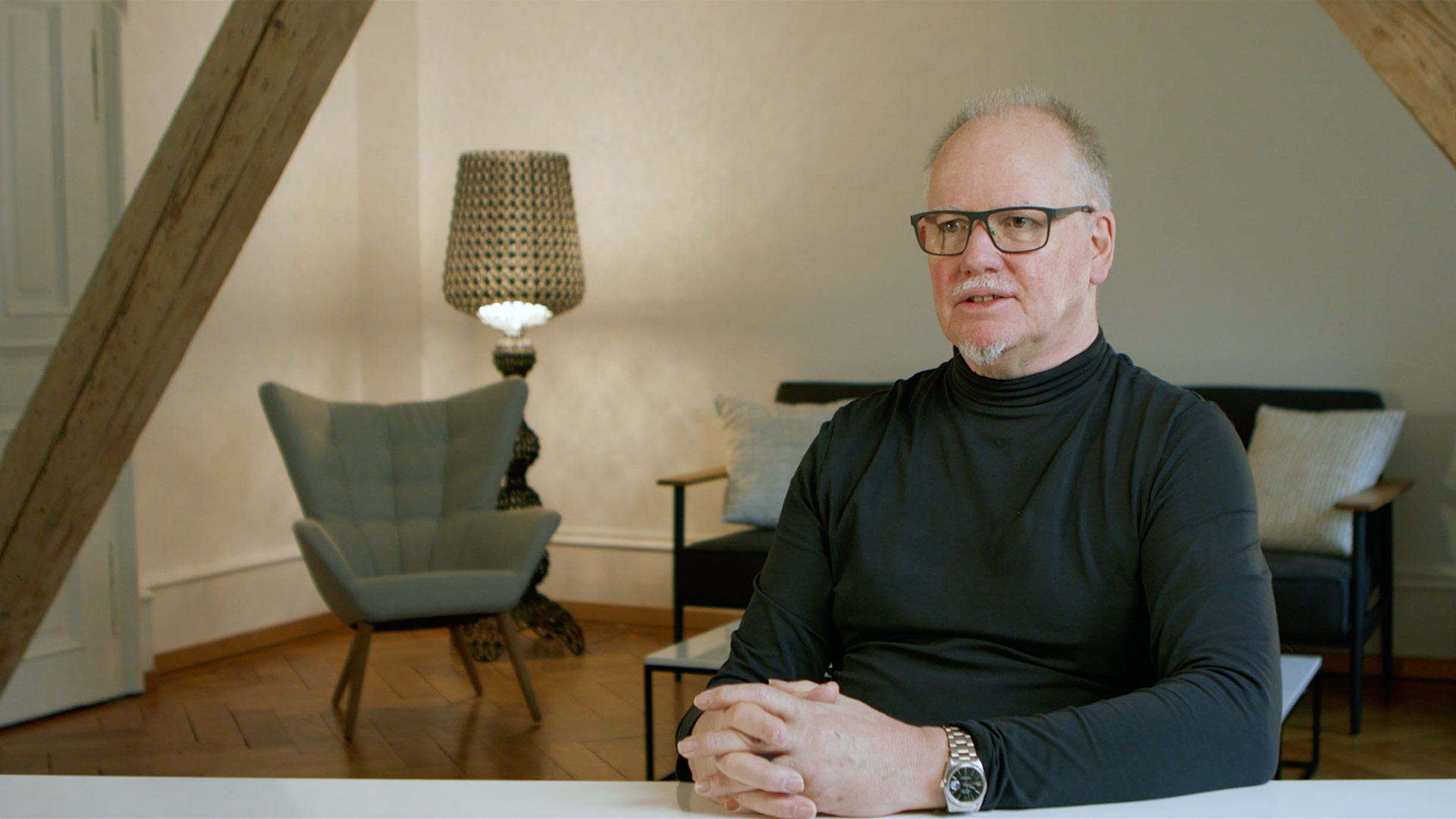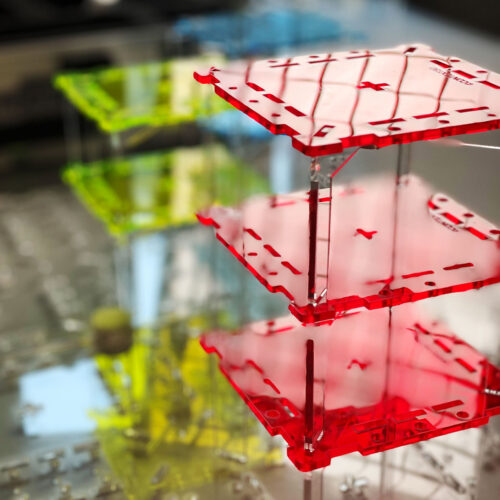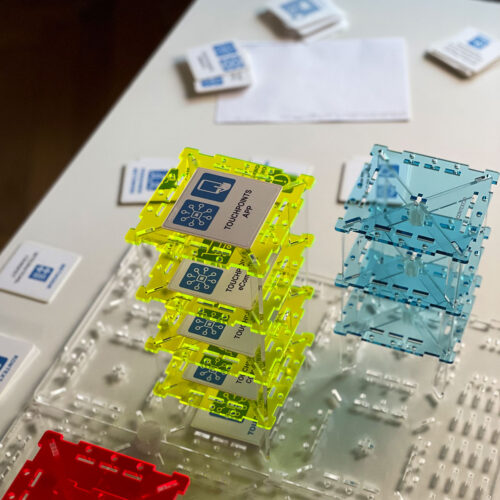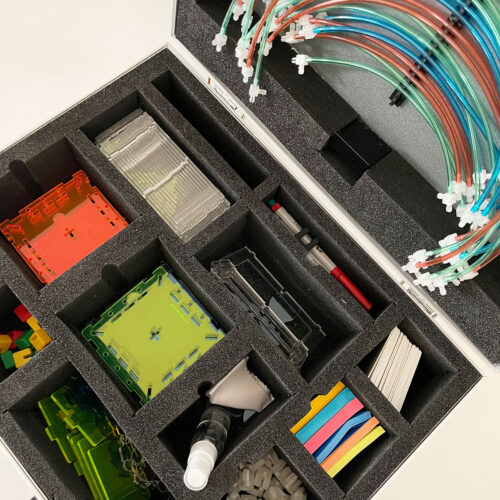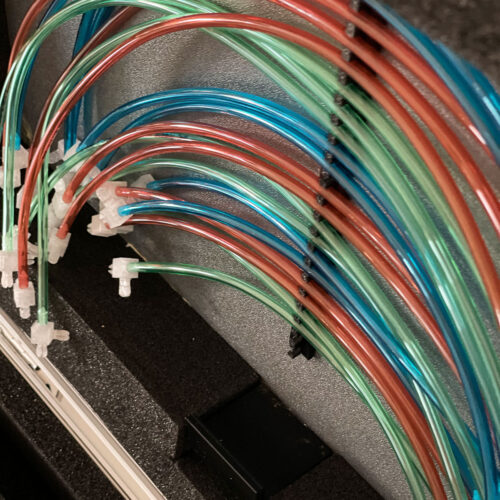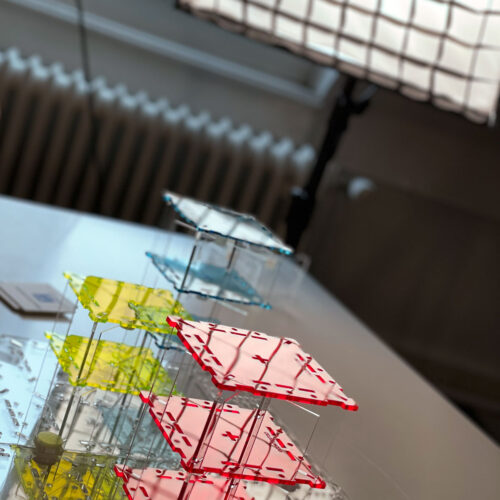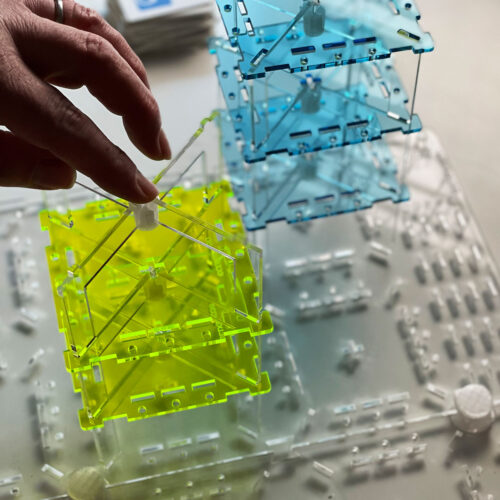When employees think outside the box.
Hansres Emch is Key Account and Sales manager at aclevion AG. He has always thought beyond the boundaries for his customers. His goal was to be able to explain complex software solutions simply, understandably and comprehensively for all people involved.
This approach gave rise to the innovative modular system, CONTEXT 3D. A universal methodology for the future, which allows even multi-layered topics to be clearly visualised.
Who is behind CONTEXT 3D?
My name is Hansres Emch, and I have been working for aclevion AG (formerly censhare (Schweiz) AG) as a Key Account and Sales Manager for 7 years. Before that I was also involved in content management and new business development with other companies. In 2021, parallel to my work at aclevion, I founded CONTEXT 3D and now offer companies the CONTEXT 3D methodology for conception, training and development under this brand.
I have had and still have daily interaction with companies from a wide variety of sectors. For me, it is very exciting to see that every company has its own DNA. Each of them is confronted with different challenges when it comes to the further development of digital system solutions and the adaptation of processes. In the area I am working in today, this of course primarily concerns the data management of communication information and its extraction for multichannel applications.
The specifications for introducing new digital system technologies and the associated process changes are usually very extensive and complex. In many meetings with companies, it becomes apparent that the participants from the various company divisions have very different prior knowledge and expectations. The challenge of such meetings is primarily to create an understanding for a complex matter among a broad audience and listen to the diverse needs accordingly.
What inspired you to create the CONTEXT 3D solution?
Modern technologies have interested me and been a part of my professional and private life for years. I am enthusiastic about everything innovative and in the last few years I have been heavily involved with the topics of 3D printing, laser cutting and control components. I am always fascinated by what can be achieved with new technologies.
However, the idea for CONTEXT 3D came to me during my work at aclevion. As a consultant, I noticed that when it came to visualising projects, we still work heavily with 2-dimensional tools. Power Point presentations are still very popular and are often the most common way to explain project plans or IT tools to a larger audience. Less abstract visualisation tools are missing to bring complex, multi-layered topics closer to a diverse audience in a more comprehensible way.
What makes CONTEXT 3D special?
CONTEXT 3D is a modular system. In concrete terms, this means that we can leave the 2-dimensional surface and create spatial constructs with various building elements. The modular system makes it possible to present complex contexts in a clearer and more flexible way. For example, scenarios, modules and objects can be built and correlated to each other. These relationships can in turn be further refined and, if necessary, adapted repeatedly without having to change large charts each time.
The 3D representation also illustrates the complex relationships within a project much better, since the viewer does not only have the 3-dimensionality of a project in front of him on a 2-dimensional “sheet” with the 3D effect only in his head, but rather directly and tangibly in front of him on the table. If necessary, the viewer can immediately intervene in the construct and adapt it to his or her needs. This could be topics that need to be added to or reduced, relations that have changed or statuses that need to be adjusted.
What is included in the modular system?
The modular system consists of different, transparent Plexiglas parts and corresponding further elements. The transparency of the modules allows for better visibility of the different elements, even when they are assembled in complex, overlapping constructs.
The basic elements are the scenario panels, which define the framework. Modules and objects are built on these. You can build upwards as well as in different spatial directions – whereas on a sheet of paper you always have to stay within the designated area. The “objects” can in turn be related to each other with “connectors” and the “connections” can also be marked again. For example, a connection can have the status of a “must” or “should” or indicate whether it is a bidirectional or simple connection. The modules can also be labelled individually, e.g., with post-its or pre-printed labels. In addition, “identifiers” can be used to represent, among other things, roles, individuals and groups of people who for example form a target group within a construct.
This description shows another major advantage of CONTEXT 3D: The modular system is never completely developed but is constantly in motion and evolving. Depending on how it is used by the respective user and which needs are to be covered or explained with it, the scenario can be changed. If required, elements specially adapted to a customer case (e.g., in a special shape or colour) can be produced so that the customer can visualise his specific project/need with CONTEXT 3D.
Who is CONTEXT 3D suitable for?
Context 3D is universally applicable. It doesn’t matter whether you need the modular system in an educational environment, in the IT sector or as a management tool, etc. – ultimately, the user determines the purpose.
In the educational field, the modular system is used, for example, to present certain topics to pupils and students in a more visual way and even allow them to work on these topics themselves. Thanks to the spatial representation, connections become clearer than if only described in writing. And because it is possible to interact with what is happening, changes also become easier to understand.
CONTEXT 3D can benefit the IT sector by making it easy to visualise even complex IT constructs that are often difficult for non-experts to fully grasp.
As a guidance tool, CONTEXT 3D can also be used with more complex subject constructs in order to make an overall view easily accessible.
As already mentioned, there are virtually no limits when it comes to using CONTEXT 3D!
Context 3D ist:
- universally applicable
- creatively applicable
- technically applicable
- structurally applicable
- suitable for the development of ideas
- not industry-specific
- and much more
Has there already been feedback from the market or interested customers?
Companies from the IT and industrial sectors as well as technical colleges have already started using the system. First experiences show that CONTEXT 3D brings valuable benefits in presenting complex thematic scenarios. In addition, the CONTEXT 3D methodology is extremely helpful in developing cross-departmental process structures and the associated dependencies and tasks.
The question is: What do you want to achieve with CONTEXT 3D?
CONTEXT 3D should encourage companies to rethink, or perhaps one should rather say be open to the possibility of planning their projects with a multi-layered tool. Surely, capturing a holistic view of an issue has always been a company’s goal, even now. However, it was difficult to break away from 2-dimensional thinking with previous tools.
CONTEXT 3D should help simplify preparation of the “big picture” for e.g., projects, challenges, etc., so that prepared topics become easier to understand and more tangible for the various stakeholder groups.
In addition, when working on thematic worlds with building blocks, the tactile aspect comes into play through putting the individual parts of the CONTEXT 3D modular system together and creating an entire whole. With this added dimension, ” you actually grasp the topics you want to work on in your hands”. Solutions grow as the components are fit together and can be optimised and adapted again.
That’s why I believe that CONTEXT 3D can be used in many different areas and for a wide variety of topics. Everyone who works with the modular system expresses their needs and solutions with CONTEXT 3D. You can work with the predefined elements or add elements of your choice and even adapt them according to your wishes.
CONTEXT 3D – the universal modular system for the future.

” When it comes to using CONTEXT 3D, there are almost no limits!
Hansres EmchGründer CONTEXT 3D

